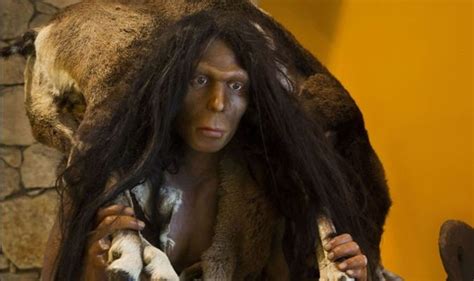
A groundbreaking discovery in Africa has challenged existing theories about the origins and dispersal of early humans, suggesting that populations across the continent were more interconnected than previously believed, with evidence of widespread interbreeding as far back as one million years ago.
New analysis of ancient DNA and fossil evidence indicates that early human populations in Africa, once thought to have evolved in relative isolation, actually engaged in significant intermixing, creating a complex web of genetic exchange that shaped the course of human evolution. This research, published in the journal “Nature,” has upended conventional wisdom and opened new avenues for understanding our shared ancestry.
The prevailing “Out of Africa” theory posits that modern humans originated in Africa and then migrated to other parts of the world, replacing existing hominin populations. However, the new findings suggest a more nuanced picture, with multiple hominin groups coexisting and interacting within Africa for extended periods. “Contrary to what we thought, there wasn’t a single origin for all of us,” explained one of the lead researchers on the project. “There were multiple different groups that were sometimes isolated but then came together and mixed. This is a story about how we became human.”
Unraveling the Mosaic: The Discovery’s Significance
The study, led by a team of international researchers, analyzed genomic data from a variety of African populations, both ancient and modern, combined with fossil records spanning millions of years. This interdisciplinary approach allowed them to construct a more complete and accurate timeline of human evolution in Africa.
The research revealed that different groups of early humans, such as Homo naledi and archaic Homo sapiens, were not entirely isolated. Genetic evidence points to instances of interbreeding, indicating that these groups occasionally encountered and reproduced with each other. This intermixing contributed to a more diverse gene pool and potentially facilitated the spread of beneficial traits throughout the continent.
One of the most striking findings was the discovery of genetic markers from an unknown hominin group in the genomes of several African populations. This suggests that there may have been other, as-yet-undiscovered species of early humans living in Africa that contributed to our genetic heritage. This adds another layer of complexity to the story of human evolution and highlights the need for further research.
“This study shows that human evolution was not a simple, linear progression from one species to another,” said Professor Eleanor Scerri, an archaeologist involved in the study. “Instead, it was a complex, branching process with multiple hominin lineages coexisting and interacting. The evidence of interbreeding is particularly significant, as it suggests that these groups were not reproductively isolated and that gene flow occurred between them.”
Challenging the “Out of Africa” Narrative
The traditional “Out of Africa” model has long dominated discussions of human origins. It proposes that modern humans (Homo sapiens) evolved in Africa and then spread to other continents, replacing other hominin species such as Neanderthals and Denisovans. While this theory remains a cornerstone of our understanding of human evolution, the new findings challenge some of its assumptions.
The discovery of widespread interbreeding within Africa suggests that the story of human origins is not simply one of migration and replacement. Instead, it is a story of interaction and adaptation. Early human populations in Africa were constantly evolving and adapting to different environments, and their interactions with other hominin groups played a crucial role in shaping their genetic makeup.
Furthermore, the discovery of genetic markers from an unknown hominin group raises the possibility that the “Out of Africa” migration may have been more complex than previously thought. It is possible that some of these unknown hominin groups also migrated out of Africa and contributed to the genetic diversity of human populations in other parts of the world.
The Role of Fossil Evidence
Fossil evidence played a crucial role in supporting the genetic findings. The researchers analyzed fossil remains from various sites across Africa, comparing their anatomical features and dating them using advanced techniques. This allowed them to reconstruct the evolutionary relationships between different hominin groups and to estimate the timing of key events, such as the emergence of Homo sapiens and the dispersal of hominin populations.
The fossil record also provided insights into the environments in which these early humans lived. By studying the types of plants and animals that were present at different sites, the researchers were able to reconstruct the climate and landscape of ancient Africa. This information helped them understand how early humans adapted to different environments and how these adaptations may have influenced their interactions with other hominin groups.
Technological Advances and Methodological Approaches
The study’s findings were made possible by recent advances in DNA sequencing technology and analytical methods. Researchers were able to extract and analyze ancient DNA from fossil remains, providing a direct window into the genetic makeup of early humans. They also used sophisticated statistical models to analyze the genetic data and to infer the relationships between different populations.
The combination of genetic data, fossil evidence, and advanced analytical methods allowed the researchers to construct a more comprehensive and accurate picture of human evolution in Africa than ever before. This interdisciplinary approach is becoming increasingly common in the field of paleoanthropology, and it is likely to lead to many more exciting discoveries in the future.
Implications for Understanding Human Diversity
The discovery of widespread interbreeding among early human populations in Africa has important implications for our understanding of human diversity. It suggests that much of the genetic variation that exists in modern human populations originated in Africa and that this variation was shaped by complex interactions between different hominin groups.
This also means that the concept of race, which is often used to divide humans into discrete groups based on superficial characteristics, is not supported by genetic evidence. Human populations are highly diverse, but this diversity is the result of a long and complex history of interbreeding and adaptation.
“The story of human origins is much more like a branching web than a tree with a single trunk,” explained one of the study’s authors. “It’s a story of adaptation, interaction, and exchange. And it’s a story that is still being written.”
Challenges and Future Research
Despite the significant advances made by this study, many questions remain unanswered. One of the biggest challenges is the scarcity of ancient DNA samples. DNA degrades over time, and it is often difficult to extract usable DNA from fossil remains, especially in tropical environments.
Another challenge is the complexity of the genetic data. Analyzing ancient DNA requires sophisticated statistical methods and computational resources. It also requires careful consideration of potential sources of error, such as contamination and DNA damage.
Future research will focus on obtaining more ancient DNA samples from different parts of Africa and on developing more sophisticated analytical methods. Researchers will also continue to analyze fossil evidence and to study the environments in which early humans lived. By combining these different lines of evidence, they hope to gain a more complete and accurate understanding of human evolution in Africa.
The next steps include expanding the geographic scope of the study to include more regions of Africa and to analyze DNA from a wider range of hominin species. Researchers also plan to investigate the functional consequences of interbreeding, to determine how the exchange of genes between different hominin groups may have affected their physical characteristics and their ability to adapt to different environments.
The Broader Context: Human Evolution Studies
This discovery fits into the broader context of human evolution studies by adding further evidence to the growing consensus that human evolution was a complex and multifaceted process. For decades, the dominant narrative focused on a linear progression from ape-like ancestors to modern humans. However, recent discoveries have revealed a more intricate picture, with multiple hominin species coexisting and interacting for extended periods.
The study also highlights the importance of Africa as the cradle of human evolution. While other continents have yielded important fossil discoveries, Africa remains the primary source of evidence for understanding our origins. The vast and diverse landscapes of Africa provided the setting for the evolution of a wide range of hominin species, each with its own unique adaptations and characteristics.
The Impact on Public Understanding of Science
The findings of this study have the potential to significantly impact the public understanding of science, particularly in the area of human evolution. By challenging conventional wisdom and presenting a more nuanced picture of our origins, the study can help to dispel misconceptions and promote a more accurate and informed understanding of science.
It is important to communicate these findings in a clear and accessible way to the general public. This can be achieved through various channels, such as popular science articles, documentaries, museum exhibits, and educational programs. By engaging the public in the excitement of scientific discovery, we can foster a greater appreciation for the importance of scientific research and its role in shaping our understanding of the world.
A New Chapter in Human History
The study marks a new chapter in the study of human history, adding considerable weight to the idea that early humans were not isolated. Instead, early humans were interconnected and likely interacted with one another, contributing to the genetic diversity of ancient Africans.
The discovery serves as a reminder that the scientific understanding of human evolution is constantly evolving. As new evidence emerges and new analytical methods are developed, our understanding of our origins will continue to change. This is a testament to the dynamic and self-correcting nature of science.
The rewritten article continues by offering a more granular breakdown of the key elements:
Key Findings and Supporting Evidence
- Interbreeding among Diverse Hominin Groups: The study presents compelling genetic evidence suggesting that interbreeding occurred between different hominin groups in Africa. Analysis of ancient DNA reveals genetic signatures from distinct populations in the genomes of individuals from other groups. This indicates that different hominin species, which were previously believed to have evolved in isolation, engaged in reproductive interactions. This finding is significant because it challenges the traditional model of human evolution, which assumes a more linear progression with limited interaction between different species. The researchers used advanced statistical methods to analyze the genetic data, confirming that the observed genetic patterns were not due to chance or contamination.
- Identification of an Unknown Hominin Group: One of the most intriguing findings of the study is the identification of genetic markers from an unknown hominin group in the genomes of several African populations. This suggests that there was another, as-yet-undiscovered species of early humans living in Africa that contributed to our genetic heritage. The researchers were able to identify these genetic markers by comparing the genomes of different African populations and identifying regions of the genome that were not shared with any known hominin species. This discovery highlights the complexity of human evolution in Africa and suggests that there may be many more hominin species waiting to be discovered.
- Revised Timeline of Human Evolution: The study provides new insights into the timeline of human evolution in Africa. By analyzing fossil evidence and genetic data, the researchers were able to refine the dating of key events, such as the emergence of Homo sapiens and the dispersal of hominin populations. The findings suggest that the evolutionary process was more dynamic and multifaceted than previously thought, with periods of rapid change and adaptation interspersed with periods of relative stability. The researchers used a variety of dating techniques to determine the age of the fossils, including radiometric dating and paleomagnetic dating.
- Complex Interactions within Africa: Instead of a simple “Out of Africa” model, the research points to complex interactions between various human populations within the African continent. The study suggests that Africa served as a crucible where diverse groups of early humans coexisted, interbred, and exchanged genes. This interaction created a mosaic of genetic variation that would eventually shape the characteristics of modern humans. “The genetic data indicates a significant level of gene flow between different groups,” one researcher stated. “This challenges the idea that these groups were completely isolated.”
- Implications for Understanding Disease Susceptibility: The genetic diversity resulting from interbreeding among early human populations could have implications for understanding disease susceptibility in modern humans. Different genetic variants may confer resistance or susceptibility to different diseases. By studying the genetic history of different populations, researchers may be able to identify genetic factors that contribute to disease risk. This information could be used to develop new strategies for preventing and treating diseases. The researchers are currently investigating the relationship between genetic variation and disease susceptibility in different African populations.
- Integration of Genetics and Fossil Record: The strength of the study lies in its integrated approach, combining genetic data with the fossil record. The anatomical characteristics of fossils can provide valuable clues about the evolutionary relationships between different hominin species, while genetic data can provide direct evidence of interbreeding and gene flow. By combining these two lines of evidence, the researchers were able to construct a more complete and accurate picture of human evolution in Africa.
Detailed Examination of Methodologies
- Ancient DNA Extraction and Sequencing: Extracting ancient DNA from fossils is a complex and challenging process. DNA degrades over time, and it is often difficult to obtain usable DNA from fossil remains, especially in tropical environments. The researchers used specialized techniques to extract DNA from the fossils, minimizing contamination and maximizing the amount of DNA that could be recovered. The extracted DNA was then sequenced using high-throughput sequencing technologies.
- Genome-Wide Analysis: Genome-wide analysis involves sequencing the entire genome of an individual. This provides a comprehensive view of the genetic makeup of that individual and allows researchers to identify genetic variations that may be associated with specific traits. The researchers used genome-wide analysis to compare the genomes of different African populations and to identify regions of the genome that were shared or unique to each population.
- Phylogenetic Analysis: Phylogenetic analysis is a method used to reconstruct the evolutionary relationships between different species or populations. The researchers used phylogenetic analysis to construct a tree of life that shows the evolutionary relationships between different hominin species. This tree was based on genetic data, fossil evidence, and anatomical characteristics.
- Statistical Modeling: Statistical modeling is used to analyze complex data sets and to identify patterns and relationships that may not be apparent from simple observation. The researchers used statistical modeling to analyze the genetic data and to infer the relationships between different populations. They also used statistical modeling to estimate the timing of key events, such as the emergence of Homo sapiens and the dispersal of hominin populations.
FAQ: Frequently Asked Questions
-
What is the main finding of this research?
The research reveals that early human populations in Africa were more interconnected than previously thought, with evidence of widespread interbreeding among different hominin groups as far back as one million years ago. This challenges the traditional “Out of Africa” theory and suggests a more complex picture of human evolution.
-
How does this research challenge the “Out of Africa” theory?
While the “Out of Africa” theory posits that modern humans originated in Africa and then migrated to other parts of the world, replacing existing hominin populations, this research suggests that multiple hominin groups coexisted and interacted within Africa for extended periods. The interbreeding among these groups contributed to a more diverse gene pool and potentially influenced the evolution of Homo sapiens.
-
What role did fossil evidence play in this study?
Fossil evidence was crucial in supporting the genetic findings. Researchers analyzed fossil remains from various sites across Africa, comparing their anatomical features and dating them using advanced techniques. This allowed them to reconstruct the evolutionary relationships between different hominin groups and to estimate the timing of key events.
-
What technologies were used in this research?
The research relied on advances in DNA sequencing technology and analytical methods. Researchers were able to extract and analyze ancient DNA from fossil remains, providing a direct window into the genetic makeup of early humans. They also used sophisticated statistical models to analyze the genetic data and to infer the relationships between different populations.
-
What are the implications of this study for understanding human diversity?
The discovery of widespread interbreeding among early human populations in Africa suggests that much of the genetic variation that exists in modern human populations originated in Africa and that this variation was shaped by complex interactions between different hominin groups. It also supports the idea that race is not a biologically meaningful concept.
Expanded Context: The Impact on Paleoanthropology
The study has a significant impact on paleoanthropology, influencing future research directions and methodologies. It encourages researchers to adopt a more interdisciplinary approach, combining genetic data, fossil evidence, and archaeological findings. This holistic approach provides a more comprehensive understanding of human evolution.
Furthermore, the study underscores the importance of Africa as the primary source of evidence for understanding human origins. It encourages researchers to focus their efforts on exploring and analyzing fossil sites in Africa, as well as on developing new techniques for extracting and analyzing ancient DNA.
The study also highlights the need for further research on the genetic history of African populations. By studying the genetic diversity of different African groups, researchers can gain insights into the complex interactions that shaped the evolution of modern humans.
The Ethical Considerations
Research involving ancient DNA and fossil remains raises ethical considerations. It is important to respect the cultural heritage of the communities where these materials are found and to involve them in the research process. Researchers should also ensure that the research is conducted in a responsible and transparent manner and that the findings are communicated to the public in an accessible way.
The study authors have taken steps to address these ethical considerations, including obtaining informed consent from the communities where the fossils were found and ensuring that the research is conducted in accordance with ethical guidelines.
Future Directions: The Road Ahead
Future research in this area will focus on several key areas:
- Expanding the Geographic Scope: The study primarily focused on populations in eastern and southern Africa. Future research will expand the geographic scope to include populations in other regions of Africa, such as West Africa and Central Africa. This will provide a more complete picture of human evolution on the continent.
- Analyzing Additional Fossil Remains: The study analyzed DNA from a limited number of fossil remains. Future research will involve analyzing DNA from a wider range of fossils, including those from different hominin species and different time periods. This will provide a more detailed understanding of the genetic relationships between different hominin groups.
- Developing New Analytical Methods: The study used sophisticated statistical methods to analyze the genetic data. Future research will involve developing new analytical methods that can handle even more complex data sets and that can provide more accurate estimates of the timing of key events.
- Investigating the Functional Consequences of Interbreeding: The study identified evidence of interbreeding between different hominin groups. Future research will investigate the functional consequences of this interbreeding, to determine how the exchange of genes between different groups may have affected their physical characteristics and their ability to adapt to different environments.
- Engaging with Local Communities: Engaging with local communities where the fossil discoveries are made is crucial for the long-term success of paleoanthropological research. Building trust and ensuring that local perspectives are integrated into the research process can lead to mutually beneficial outcomes. Collaborating with local researchers and providing educational opportunities can also contribute to a more equitable and sustainable approach to scientific inquiry.
The study “Africa’s Ancient Humans: Surprise Discovery Rewrites the Story!” provides significant insights into the complexities of human evolution. The findings challenge traditional models, underscore the interconnectedness of early human populations, and highlight the importance of interdisciplinary approaches in paleoanthropological research. As scientists continue to explore the genetic history and fossil records of our ancestors, our understanding of what it means to be human will undoubtedly continue to evolve.


![Oreo’s [Flavor] So Good, Fans May Demand a Permanent Spot!](https://jelajahtekno.com/wp-content/uploads/2025/06/unnamed-file-855-150x150.jpg)






